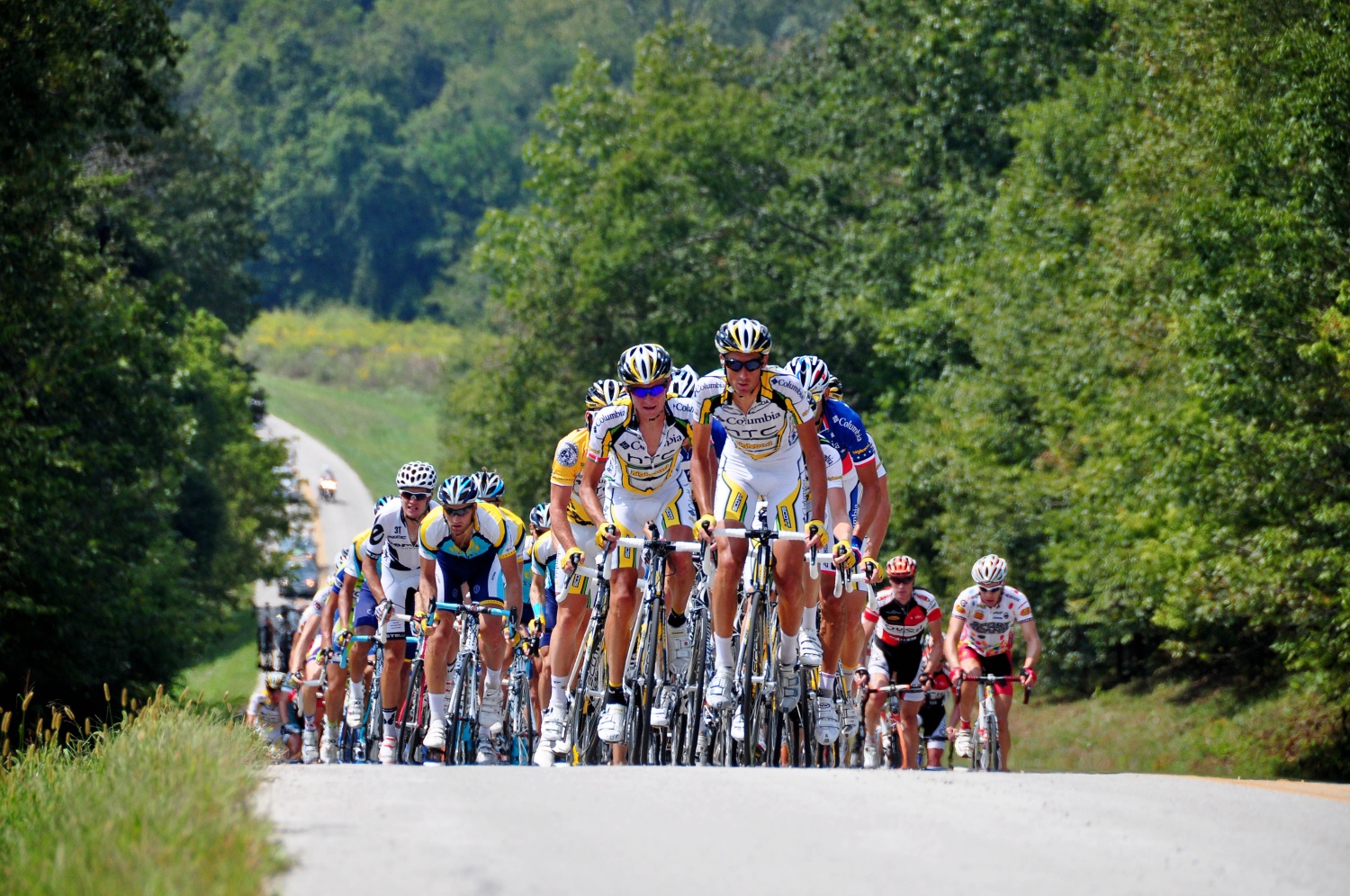
One-day Classics and World Championships are bike races of conservation. In the finale, the riders who have managed their energy consumption best will race for victory. In races over six hours long, each pedal stroke must be dosed; hills that seemed easy at the start become leg breaking in a final hour.
The best riders are not only the strongest, but also those who move efficiently through the peloton, trust their teammates, and don’t squander their efforts needlessly. Those who know how to conserve won’t be visible on television until the finale when they race for the win. And, some who are physically capable of winning never do as they fail to properly gauge their efforts and spend too much time in the wind.
Photograph by Graham Watson
In my first season of racing in Europe with US Postal, Johan Bruyneel, our director, clearly outlined our roles in the team meeting, before the Clasica San Sebastian, a one-day race in the Basque Country. The strategy wasn’t complicated if we each executed our roles. Some riders were to jump into the early breakaways to ensure the team was represented and not forced to chase all day. Others were to set up the finale in the last hours of racing for our leaders, George Hincapie and Lance Armstrong. My job was to protect them from the wind and position them until it was time for them to move to race for victory in the last hour. For over 200 km they would sit in my slipstream, tight on my wheel, as I shepherded them in the peloton, always placing them in the safest position, out of the wind. If they wanted to remove clothing, I would take it to the team car for them, if they needed food or drink, it was my job to serve them and if they stopped for a pee, puncture, or mechanical issue I would stay at their side, and return them to the peloton in my slipstream. Even when the peloton cruised along at a conversational pace, they stayed out of the wind, conserving. Every ounce of energy I could help them save, would be available in the finale.
While watching Milan San Remo earlier this year, it was interesting to see how riders used their teammates, moved through the peloton and positioned themselves. The eventual winner, Mathieu van der Poel, wasn’t seen until he accelerated to the front at the top of the Cipressa in the finale of the race and then, soon after, unleashed his potent attack over the Poggio which nobody could match. Wout van Aert, one of his main rivals on the day, could often be seen in the front of the bunch, in the wind, as the peloton raced along the coast wasting energy he could have used to follow Van der Poel’s winning attack.
Early in my cycling career, one of my coaches, Dr. Allen Lim, analyzed thousands of power files for his PhD. Through all the analysis, he noticed commonalities between riders. Those who were able to best perform their jobs in the finale of the races spent the most time in the slipstream during the first hours and, therefore, had the most zeros on their power files. When a peloton is cruising along at a steady tempo, energy conservation isn’t always obvious as the difference between 100 watts and 50 feels minimal. Some riders will sit on the side of the bunch in the wind, chatting with teammates or friends while others will race up the side, moving from front to back in one fast surge. Riders who conserve almost do it innately. And, it’s hard to break bad habits for those who don’t.
As a domestique for most of my career, charged with the duty of caring for the team leaders, I developed an understanding of how those leaders rode, how they liked to be positioned in the bunch, and how they moved on their bikes. I was in constant communication with them and there had to be mutual trust. With Cavendish, Hincapie and Armstrong, I never had to look back to see if they were on my wheel as I knew they would never leave it. They each had an acute understanding of how much each extra effort would impact the final result.
A bike race has countless variables that are often changing during the event. To win, a rider and team need to control as many of those variables as possible. Cycling is not a chess game on wheels, it is poker. In chess the pieces are on the table yet, in a game of poker, where the other players’ cards are hidden, a rider will rarely know the strengths and weaknesses of their opponents. Conserving and calculating energy use, and vigilantly watching how their competitors move, allows a rider to strike hard in the final hour of racing when the toughest races are won and lost.
By Michael Barry
Lead Photograph by John Pierce
